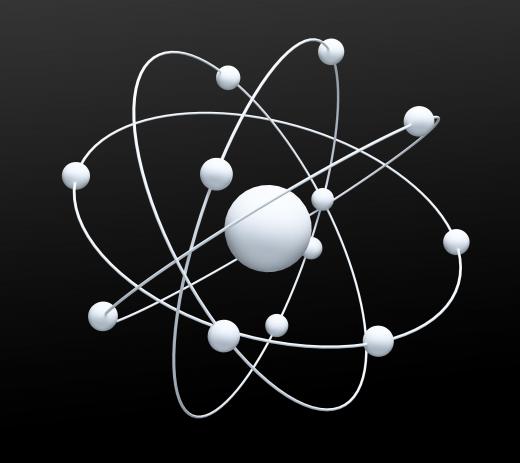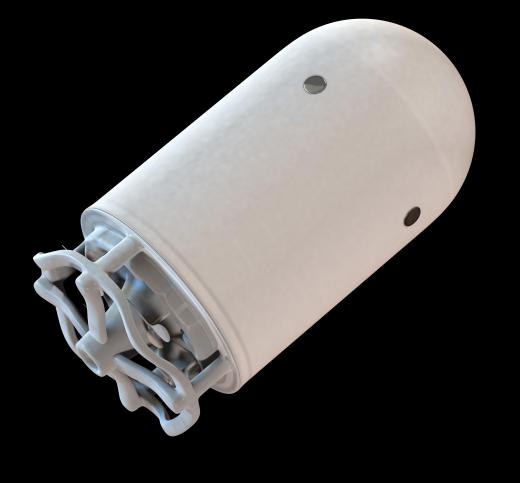What does Nano Mean?
 Michael Anissimov
Michael Anissimov
The prefix nano- means billionth. A nanometer is a billionth of a meter, a nanogram is a billionth of a gram, etc. Millionth and thousandth are micro- and milli-. When used in the context of modern discussions, the prefix nano- is most often put before the unit of length, the meter, referring to structures and processes occurring on a nanometer scale, the size of atoms. Nanoscience is the field that investigates this type of phenomena, whereas nanotechnology is the engineering discipline that makes useful devices to exploit it.
The size of individual atoms ranges from 0.1 to 0.5 nanometers. Using scanning tunneling microscopes, which create images using quantum tunneling effects, we can resolve individual atoms and even manipulate them to some degree. As a reference point for the size, the smallest bacteria, of the genus Mycoplasma, are 200 nm across.

The idea of nanotechnology began with famous physicist Richard Feynman, who gave a 1959 talk titled, "There's Plenty of Room at the Bottom," in which he said, "The principles of physics, as far as I can see, do not speak against the possibility of maneuvering things atom by atom." Feynman proposed using a series of robot arms construct ever-smaller robot arms, until the arms get so small that they are able to manipulate individual atoms.

The appeal of such a machine, in combination with near-term applications of nanoscience and nanotechnology, have inspired many billions of dollars of investment in the field. As of June 2007, over 200 consumer products contain some material considered to be nanotechnology. Of course, the meaning of the word "nanotechnology" has considerably broadened since it was first conceived. Originally it meant nanoscale machine systems, but today it tends to apply to practically any type of scientific research taking place at the nanoscale.
The word "nanotechnology" was initially popularized in 1986 by Eric Drexler through his book Engines of Creation, which discussed the feasibility and potential of advanced nanotechnology. It was followed by the technical book Nanosystems in 1992, which introduced various designs for molecular machines. These have yet to be actually built, though.
AS FEATURED ON:
AS FEATURED ON:












Discussion Comments
@ istria- Nanotechnology's practical uses are almost endless. To me the biggest area of interest is in the fabrication and functionality of materials. An automobile covered in nano surfaces like the windshield you described could improve fuel economy through reduction of friction. I wouldn't be surprised if something like this improved highway efficiency by five percent or more.
I could also envision nanodesigned building materials that allow buildings to hold up better during earth quakes, repel mold, or increase fire resistance. I am a graduate student and one of the courses that I will be taking is Materials Physics that deals heavily with things like crystalline structure, elasticity, and lattice vibrations on a nano scale.
@ Babalaas- I could see this application being relevant to automobile windshields, windows on buildings, and windows in skylights. This type of glass would make it so much easier to keep these surfaces clean and would eliminate the need for windshield wipers. It would also reduce the maintenance costs of buildings by not requiring the windows to be cleaned as often. It’s no wonder that nanotechnology is becoming an important subject in education.
Nanomaterial is likely to be the next big area of innovation in engineering. I was recently surfing the web for videos and I found a video that demonstrated the effectiveness of nanostructured glass in repelling water. It was an interesting video. The glass was put under a tube that was dripping water that had been dyed blue for contrast. The water literally bounced off the nanostructured glass, and left not a trace.
A piece of regular glass of the same proportions was placed underneath the tube and was subject to the same experiment. The water dripped onto the glass, and slid down to the edge where it pooled before slowly dripping off the edge.
Post your comments